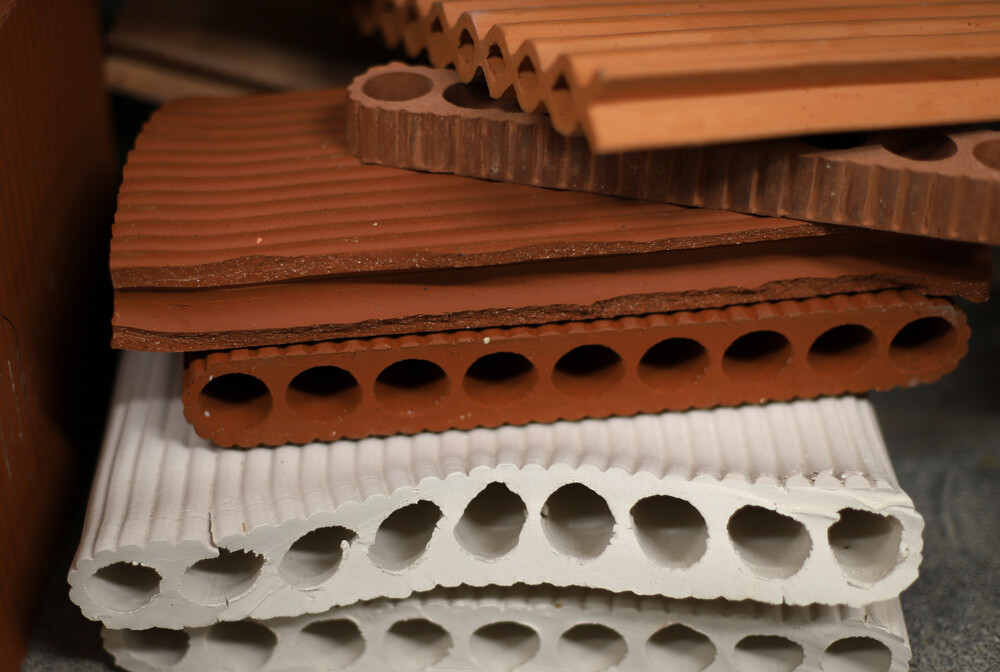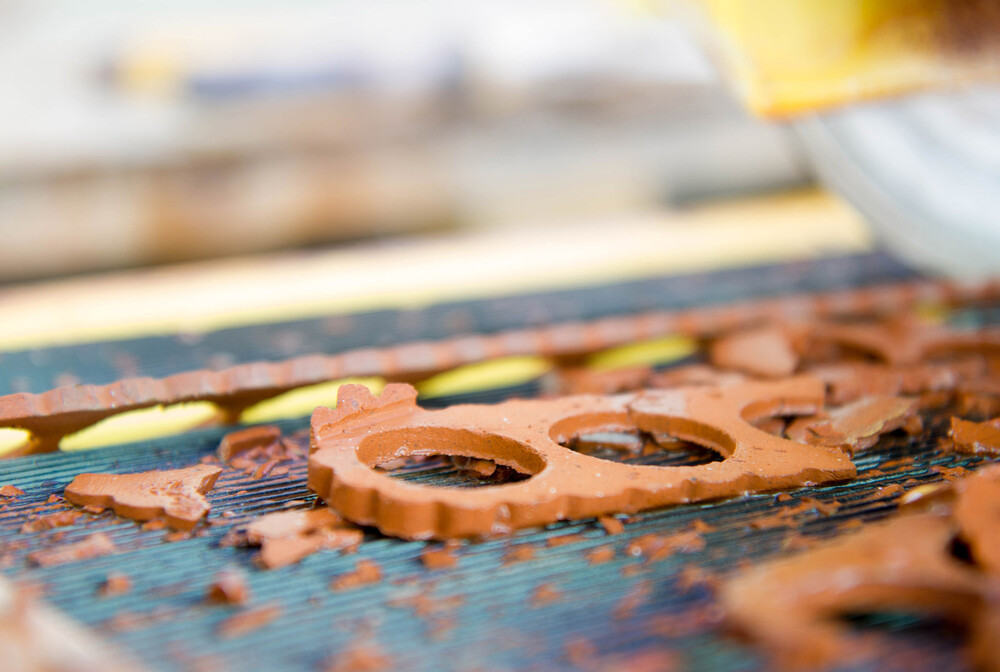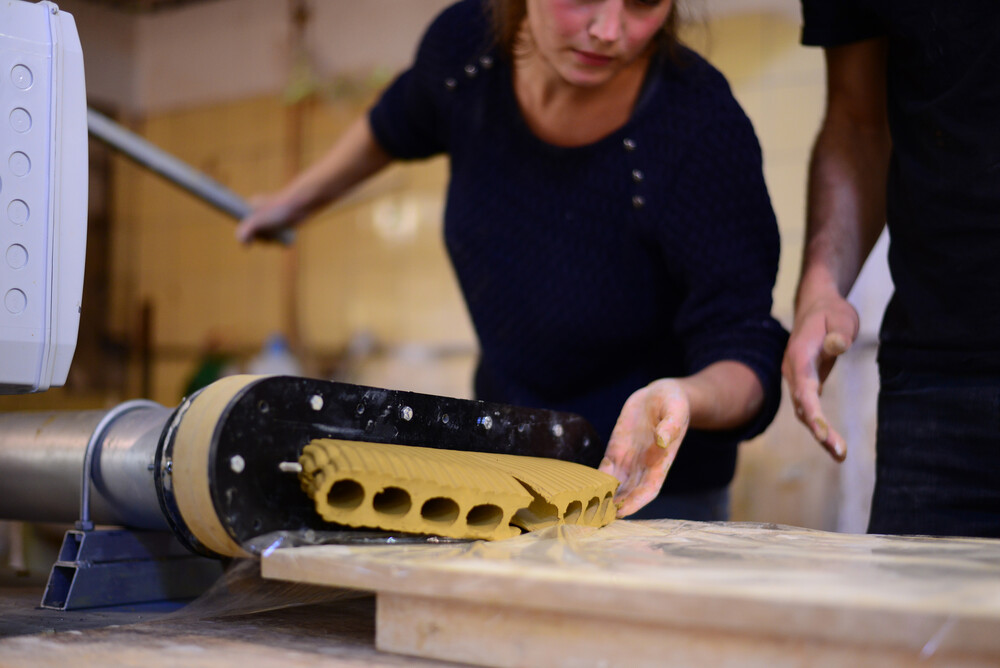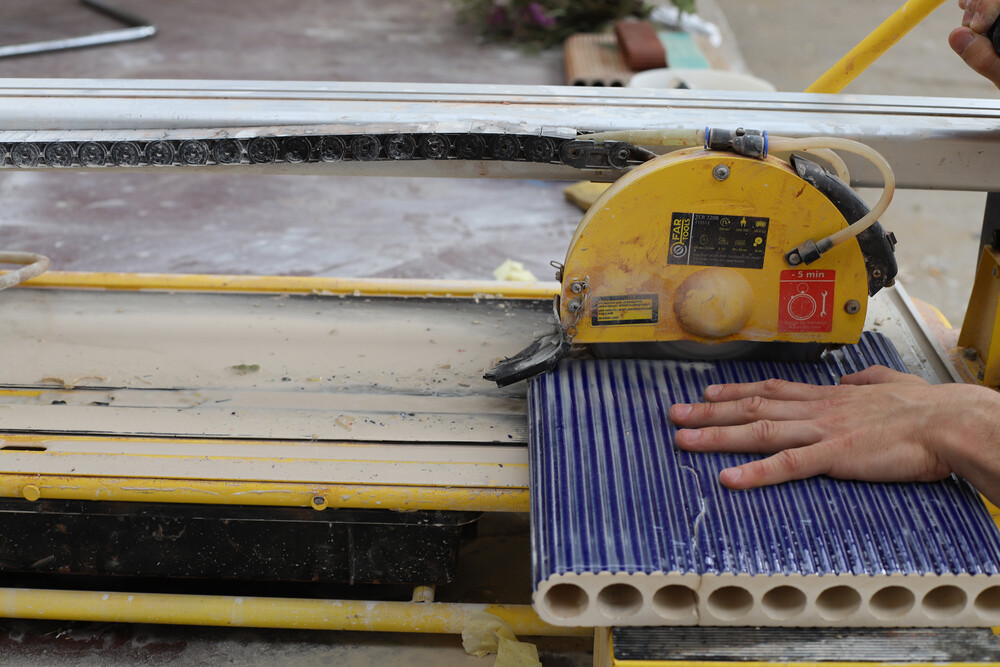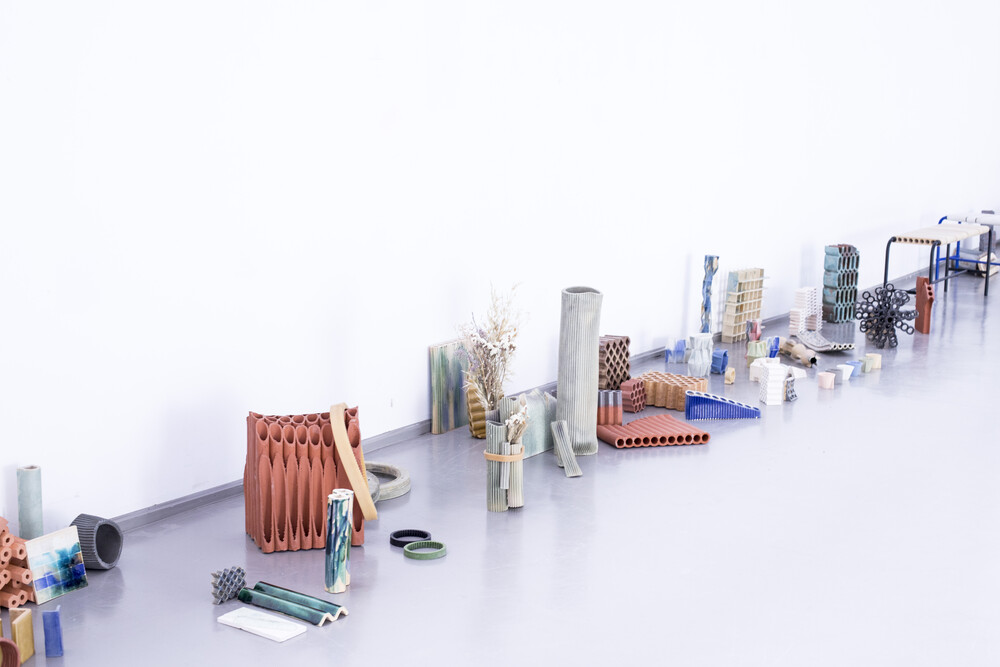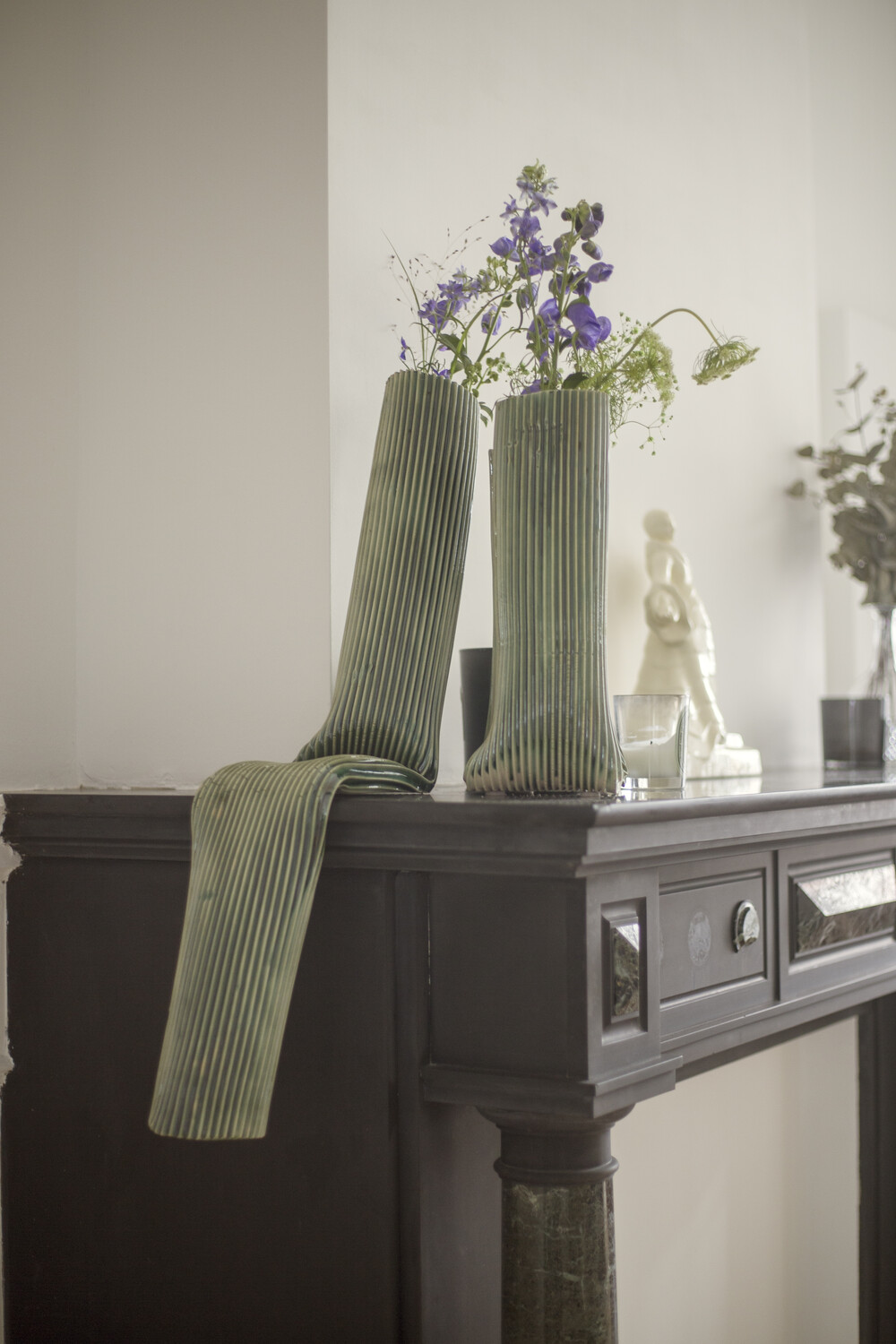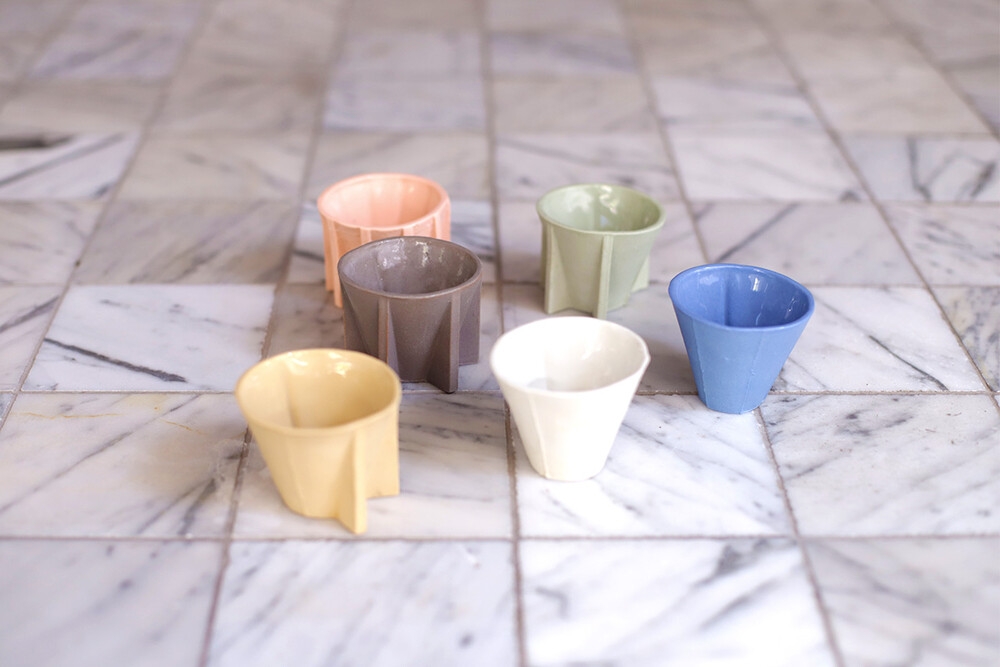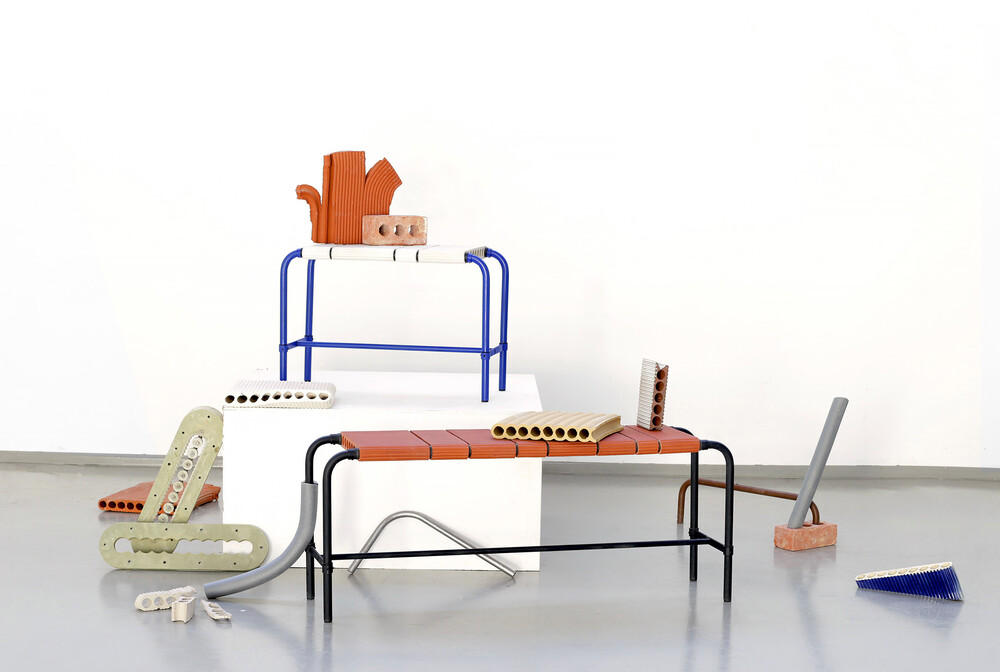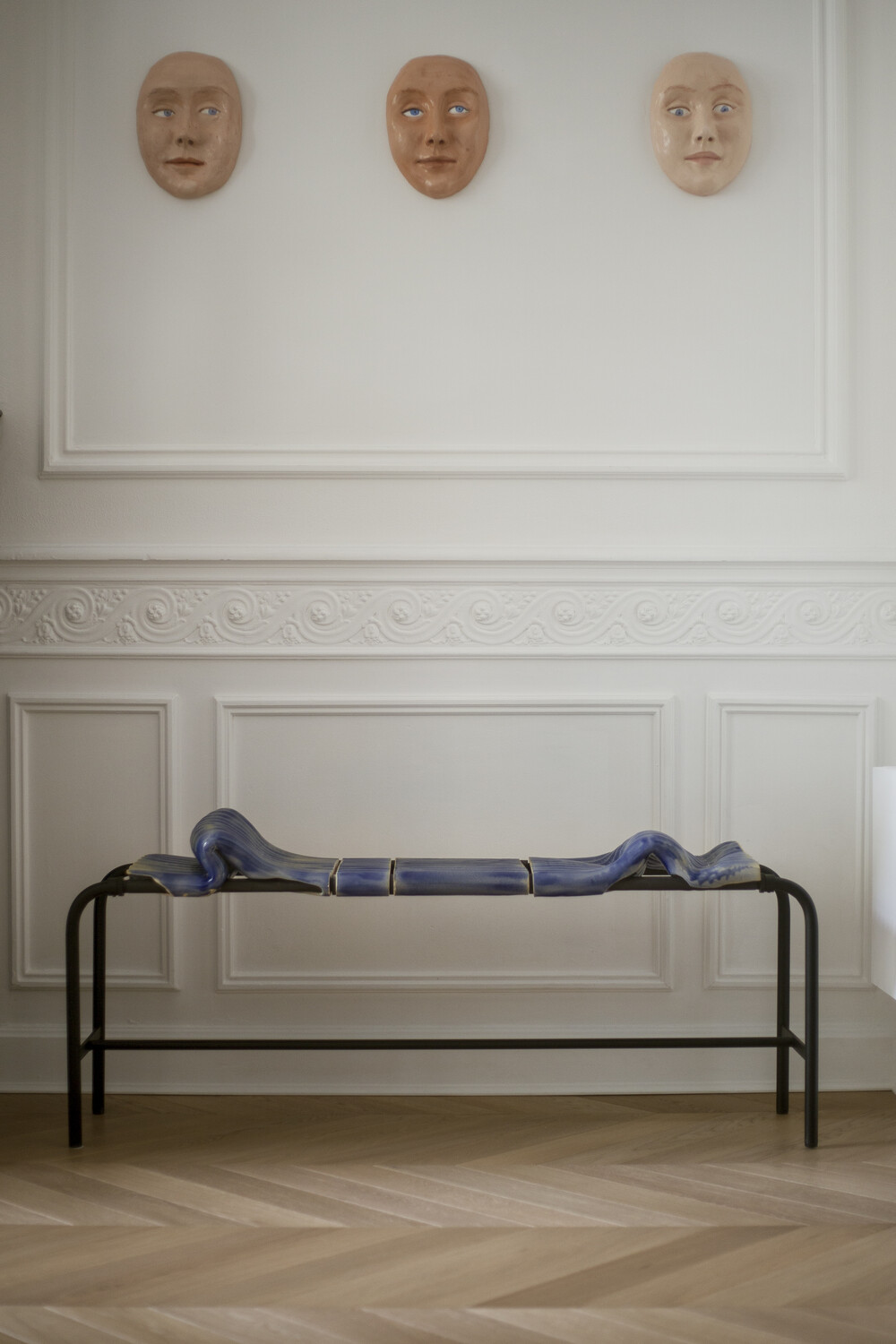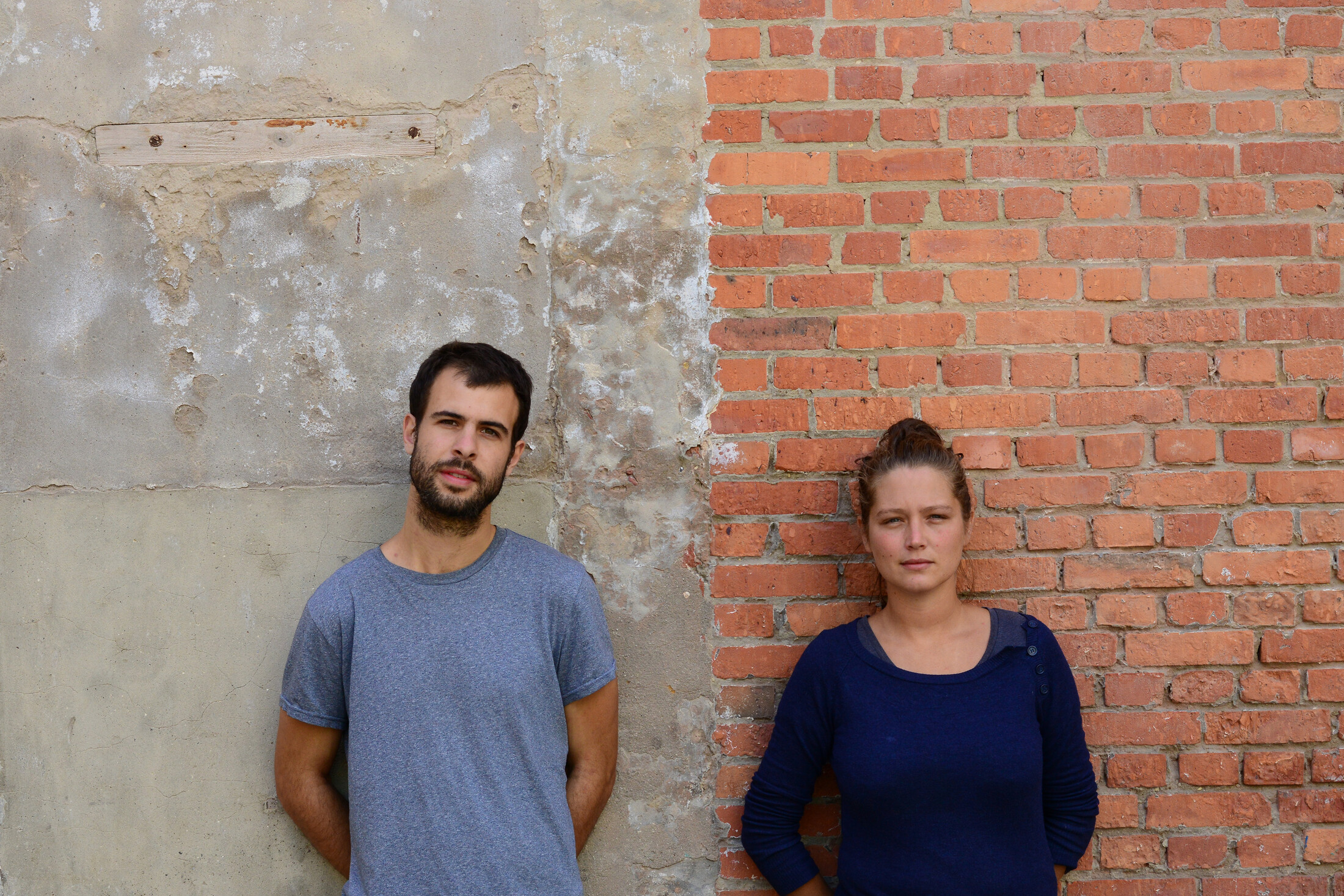
"The idea is to produce a unique design object with the characteristics of an industrial product, following an artistic approach."
Designer of the year 2022
Every year, a designer of the year is chosen by the magazines Knack Weekend & Le Vif Weekend and the Biennale Interieur. This year, Brussels-based studio BISKT wins this recognition. The design studio is lauded for their innovative designs that push the boundaries of ceramics. In their own unique way, they bring craft and industry together. The prize is being awarded for the 17th time. Partners of the prize are the Design Museum Gent, CID Grand-Hornu, Design Museum Brussels and MAD Brussels. Studio BIKST succeeds Sebastien Caporusso as designer of the year.
Ceramist and industrial designer, Charlotte Gigan and Martin Duchêne founded studio Biskt in 2018. At the crossroads of design and ceramics, industrial processes and manual skills, studio biskt experiments with clay extrusion, a process borrowed from industry. Charlotte and Martin pay particular attention to the way objects are created.
MAD had a talk with Charlotte and Martin from Studio BISKT.
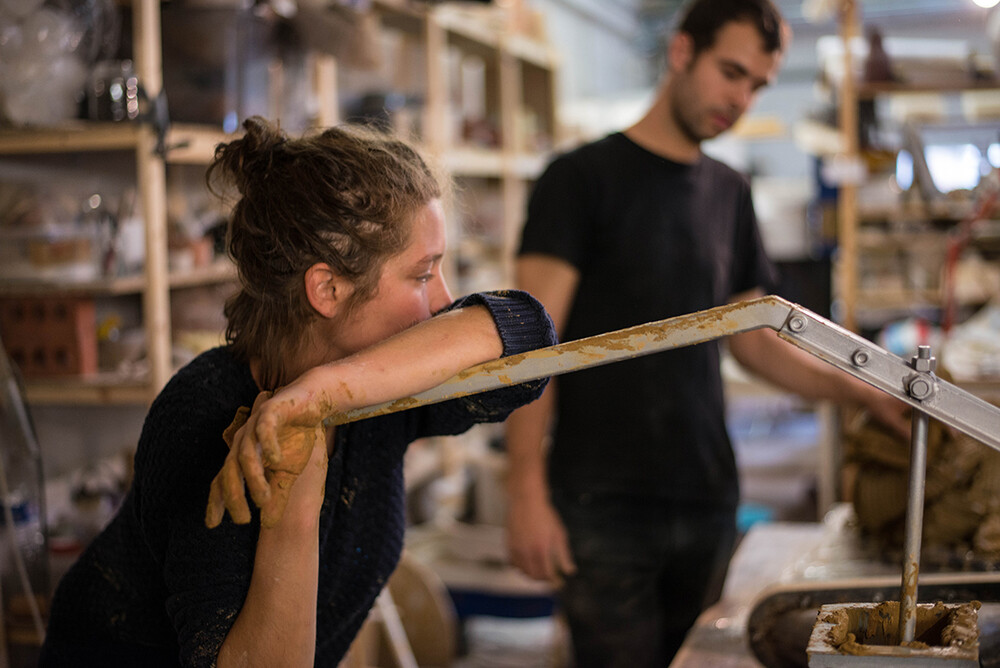
How did Studio Biskt started?
"We met at La Cambre in 2011, Martin studying industrial design and me ceramics. In 2018, after several years of working together, we decided to set up Biskt studio. Martin has a passion for machinery, and since I don't really have a background in design, we thought about the best way to combine the work of an industrial designer with that of a ceramist. We wondered how we could combine industry with craft. Our studio is a bit of a hybrid that way. "
In your projects, you bring together design and craftsmanship, can you explain.
"We focused on one technique in particular, pottery extrusion. This is an industrial process used to make bricks. Martin has always been interested in this particular technique. We quickly applied this technique in the workshop, we wanted to explore what it could do for the craft industry. We then developed the technique in such a way that we could apply extrusion in a small workshop. This showed us all the possibilities the technique can offer. The interesting thing about extrusion is that we can experiment with it. We make our own moulds and then mill them with a CNC. Since Martin also makes CNCs, there is a link between design and ceramics."
"The extrusion technique allows us to work on aesthetics. The nice thing is that we can make our own moulds at 9:00, mill them at 9:30 and then test them at 10:00, so we can experiment a lot. We have all the tools to make our idea happen immediately."
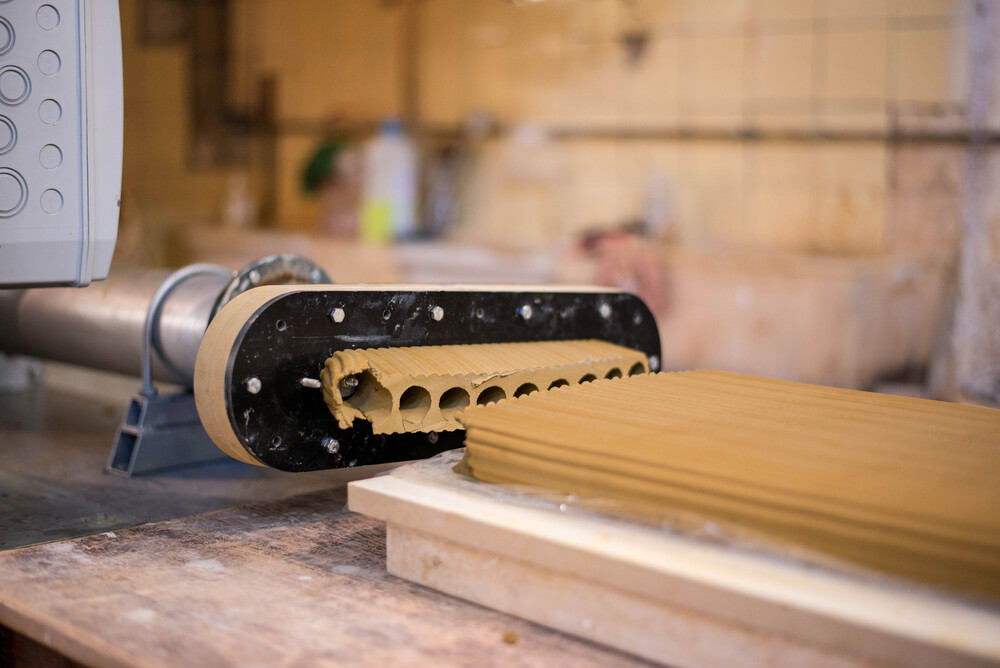
What are the working dynamics of your studio? What is your approach?
"The idea is to produce a unique design object with the characteristics of an industrial product, all following an artistic approach. We take inspiration from architecture, mechanisms, to ask questions about the origin and manufacturing process of our objects."
"In terms of projects, we are quite eclectic. We have defined certain axes: on the one hand, we work, with or without architects, for individual and personalised projects, for restaurants or individuals. At the same time, we exhibit more 'collectible design in a gallery, i.e. objects that have a utilitarian approach but remain structural in the way they are made. Finally, we are more interested in shops or individuals for design projects."
"We can also collaborate with other artists or craftsmen, as long as there is a general sense of joint research. We recently collaborated with Pierre-Yves Morel, who does decorative painting, as part of Wallonie Design's Duos en Résonances project. There is a real collaboration between him and us regarding material, research and sharing of experiences, which made the project very interesting."
What do you think are the challenges of design today?
"When you work with materials and create something, you ask yourself what impact you have and create. There is a connection with production, we wonder how things are made, but also where they are made. It's important to ask ourselves all these questions and put production back at the centre rather than overconsumption. Ideally, we try to work with Belgian clay. There is also a return to "doing", to wanting to understand and discover craft."
"We have been nominated as designer of the year by the Kortrijk Interieur Biennale, we are very moved. It shows that our project is recognised in the Belgian landscape, which is very encouraging!"
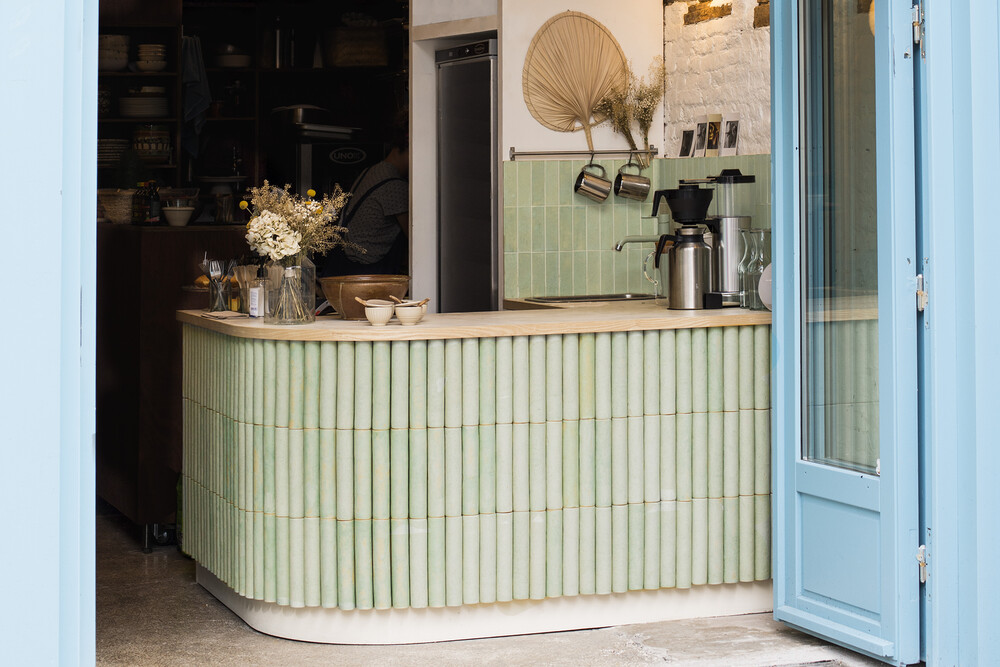
Do you have any advice for young designers?
"You have to believe in your project, surround yourself well and persevere. We are lucky that the Brussels Capital Region offers several opportunities for creative projects, grants and coaching to support creators. In the beginning, our applications were often rejected. Then we won a grant from MAD Brussels that allowed us to buy our first extrusion machine. We also followed coaching sessions at MAD. The coach helped us refocus our business model at a crucial moment."
"When you come out of a study, you are "thrown" into a big stream. One should not hesitate to share with others what one wants to do, the feedback and reflections allows us to build a project. Sometimes we don't have enough distance from our own work and sharing with others allows us to take that distance. Let me conclude by saying that it is a pleasure to get up in the morning and be able to say that we like what we do and we can contribute to change."
